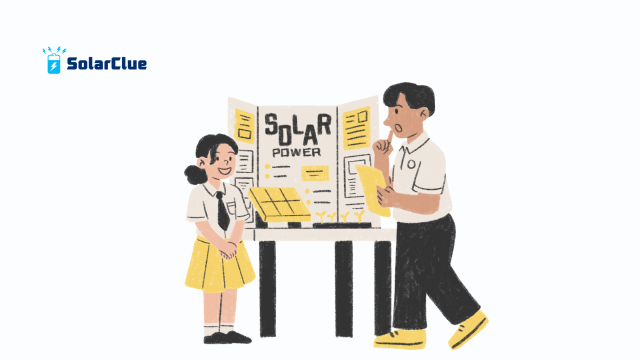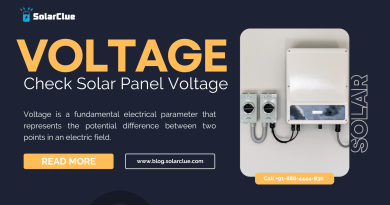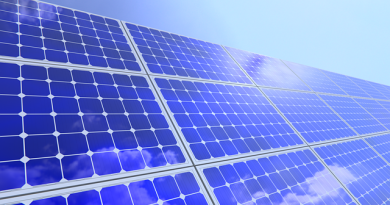How to Choose the Right Solar Power Solution for Your Commercial Business
If you’re a business owner looking to cut energy costs and embrace sustainability, switching to solar power isn’t just an option — it’s a smart long-term investment. With rising electricity prices and growing environmental awareness, choosing the right solar power solution for your commercial business can significantly boost your operational efficiency, reduce overheads, and enhance your brand’s green reputation.
But with so many options out there, how do you choose the right system that aligns with your energy goals, budget, and business size? This guide will walk you through every essential step to make an informed decision.
Table of Contents
- 1 Why Commercial Businesses Are Turning to Solar
- 1.1 Step 1: Analyze Your Energy Needs
- 1.2 Step 2: Know Your Site’s Potential
- 1.3 Step 3: Compare Solar Technologies and Efficiency
- 1.4 Step 4: Choose the Right Type of Solar System
- 1.5 Step 5: Evaluate Commercial Solar Benefits
- 1.6 Step 6: Understand the Commercial Solar Installation Process
- 1.7 Step 7: Calculate ROI and Payback Period
- 1.8 Step 8: Explore Government Incentives and Tax Benefits
- 1.9 Step 9: Choose a Trusted Solar Partner
- 1.10 Step 10: Plan for Maintenance and Monitoring
- 1.11 Step 11: Financing Options for Commercial Solar
- 1.12 Step 12: Learn from Common Mistakes
- 2 Final Thoughts
- 3 FAQs
Why Commercial Businesses Are Turning to Solar
Today, more businesses are realizing the transformative impact of solar energy for business. Beyond just reducing monthly bills, adopting solar can help companies become energy independent, qualify for government incentives, and make a bold environmental statement. The shift to solar power for businesses is accelerating, and staying ahead of the curve could give your company a unique competitive edge.
Step 1: Analyze Your Energy Needs
Start by understanding your current energy usage. Review your electricity bills over the past 12 months to identify consumption trends, seasonal spikes, and peak demand periods. This step helps you size your solar power system accurately and ensures you generate enough power to meet your needs efficiently.
Step 2: Know Your Site’s Potential
Assess whether your commercial building is suitable for solar panel systems. Rooftop space, angle, and shading all impact performance. Alternatively, if roof space is limited, ground-mounted systems or commercial solar solutions like carports could be a better fit.
You can use tools like satellite imaging and get a professional site assessment to determine system feasibility and potential solar power efficiency.
Step 3: Compare Solar Technologies and Efficiency
Not all solar panels are created equal. Some offer higher solar energy efficiency, which means more power generation even in limited space. High-efficiency panels are ideal for urban buildings where rooftop area is constrained.
Make sure the system components — panels, inverters, and batteries if included — are top-tier in terms of performance and reliability. This ensures long-term energy production and system stability.
Step 4: Choose the Right Type of Solar System
You’ll need to decide whether to go for:
-
Grid-tied systems – Stay connected to the grid; excess energy can be sold back via net metering.
-
Off-grid systems – Completely independent, ideal for remote locations.
-
Hybrid systems – A blend of both, offering backup during outages.
The best option depends on your energy priorities, reliability needs, and location-specific power challenges.
Step 5: Evaluate Commercial Solar Benefits
The commercial solar benefits extend far beyond just lower electricity bills. Here are a few key advantages:
-
Fixed energy costs for 25+ years
-
Increased property value
-
Attractive tax incentives and depreciation benefits
-
Positive environmental impact and brand reputation
-
Energy independence and reduced grid dependency
Step 6: Understand the Commercial Solar Installation Process

The commercial solar installation process includes the following phases:
-
Site inspection and feasibility study
-
Custom design and engineering
-
Permitting and paperwork
-
Installation by certified professionals
-
Testing and grid integration
A good solar provider will handle everything from A to Z, ensuring compliance with local laws and safety standards.
Step 7: Calculate ROI and Payback Period
The return on investment (ROI) for a solar power system depends on your energy savings, installation cost, financing method, and local incentives. Most commercial systems offer ROI in 4–7 years with significant savings thereafter.
Leverage tools or consult with an expert to calculate your projected savings. Consider factors like maintenance, warranty, and system lifespan.
Step 8: Explore Government Incentives and Tax Benefits
Businesses investing in solar energy can take advantage of:
-
Accelerated depreciation under Section 32
-
GST input credits
-
Capital subsidies for specific industries
-
Net metering and feed-in tariffs in several states
These incentives drastically lower your upfront costs and improve system affordability.
Step 9: Choose a Trusted Solar Partner
Your installer can make or break your solar experience. Work with an experienced and transparent provider like solarclue.com who understands your local regulations, business goals, and offers end-to-end support.
They’ll help you select the best system, manage installation, and provide ongoing support. You can also explore deeper industry insights at blog.solarclue.com.
Step 10: Plan for Maintenance and Monitoring
Though solar panel systems for commercial buildings are largely maintenance-free, routine checkups are essential. Choose a system that includes remote monitoring software to track performance, detect issues early, and optimize your output.
Most quality installers offer service contracts to ensure peace of mind and ongoing efficiency.
Step 11: Financing Options for Commercial Solar
There are several ways to finance your solar project:
-
Outright Purchase: Highest ROI but requires capital
-
Solar Loans: Spread the cost over time with ownership benefits
-
Power Purchase Agreement (PPA): Pay only for the power you use
-
Leasing: Lower upfront cost but limited long-term savings
Each option has pros and cons. Choose the one that aligns with your financial goals and cash flow.
Step 12: Learn from Common Mistakes
Businesses often make costly errors like under-sizing systems, choosing low-grade components, or ignoring future growth. Don’t cut corners. Always involve solar professionals and insist on quality products with performance guarantees.
Final Thoughts
Choosing the right solar power solution for your commercial business starts with understanding your needs and ends with long-term savings, energy security, and a smaller carbon footprint. With the right strategy and a trusted partner, your solar journey can be smooth, impactful, and financially rewarding.
Ready to make the switch? Explore the best options for your business today at solarclue.com or stay informed with the latest industry insights at blog.solarclue.com. Let the sun fuel your success!
FAQs
1. How much can a commercial business save with solar power?
Savings vary based on energy usage, location, and system size, but many businesses save 50–70% on their electricity bills.
2. How long does it take to install a solar system for a business?
Typically, 4 to 12 weeks from assessment to activation, depending on project complexity and permitting.
3. Are solar systems effective during rainy or cloudy days?
Yes. Solar power systems still produce electricity on cloudy days, though output is lower than on sunny days.
4. Can I expand my solar system later if my business grows?
Absolutely. Most systems are modular and can be scaled up as your power needs increase.
5. What happens during a power outage?
Grid-tied systems shut down during outages for safety. To maintain power during blackouts, consider a hybrid system with battery backup.




